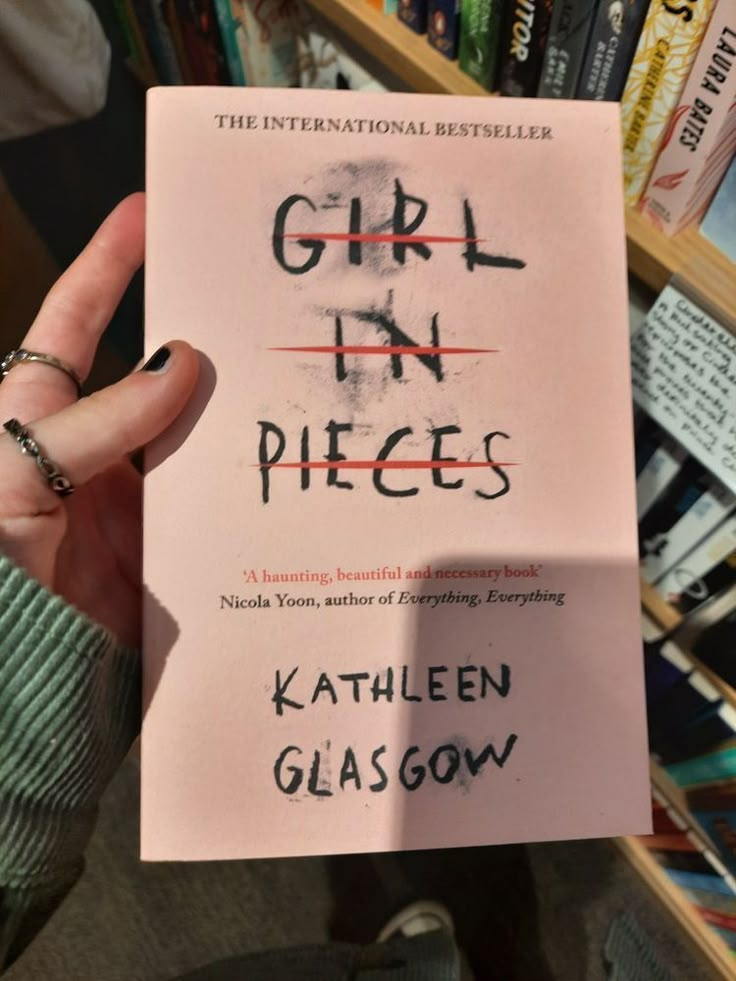
You read some books and they cut into your soul, not to hurt you, but to show you where you’re bleeding. Girl in Pieces by Kathleen Glasgow is one of those rare novels that doesn’t just tell a story. It opens a wound, then sits with you in the dark as you figure out how to survive the ache. I picked it up on a day when I felt like my own cracks were starting to show, when the weight of old scars, both visible and invisible, felt too heavy to carry.
By the time I was mid-way into the book, I was crying in that quiet, breathless way that comes when a story hits too close to home. Because Charlie Davis, the girl in pieces, wasn’t just a character to me. She was a reflection of every young woman who has ever hurt so deeply that pain became a language, a companion, a way to survive.
At the heart of this unflinchingly honest debut is Charlotte “Charlie” Davis, a seventeen-year-old girl with scars on her skin and a thousand more stitched inside her. After losing her best friend to suicide, and her mother to apathy and cruelty, Charlie ends up homeless, alone, and self-harming, spiraling into a world of pain that feels unbearable and yet, tragically, too familiar for many readers. The novel doesn’t shy away from the grim realities of trauma, addiction, and mental illness. It doesn’t sanitize suffering. But what makes it so deeply human is that it never lets go of the thread of hope, no matter how frayed it becomes.
Glasgow lays down the premise not with fanfare but with a deep reverence for the truth of being young and broken in a world that often looks away. She brings readers face to face with what it means to live with invisible wounds, and to feel unseen even when surrounded by people. But Girl in Pieces is not a voyeuristic look at pain, it is a portrait of survival. A painfully beautiful testament to the tiny acts of bravery that it takes just to keep going.
Charlie is not the polished, wise-beyond-her-years protagonist. She’s messy. She makes poor choices. She runs from the people who try to love her. She stumbles, falls, and sometimes gets back up only to fall harder. And that’s what makes her real. That’s what makes this book matter. Because Glasgow dares to say what many are too afraid to admit: healing isn’t linear. Sometimes it looks like progress, sometimes it looks like relapse. And sometimes, it looks like getting out of bed when everything inside you wants to disappear.
The prose is poetic without being pretentious. Sparse when it needs to be. Unflinching when it has to be. Glasgow, who has her own history with self-harm, writes with a rare kind of authority, the kind that comes not from textbooks, but from having lived through the fire and come back with ashes under her fingernails. And because of that, the book pulses with authenticity. With empathy. With a quiet understanding that never turns away, no matter how ugly or uncomfortable the truth becomes.
What makes Girl in Pieces so compelling isn’t just the darkness, it’s the tender flickers of light that break through. A kind stranger. A new friend. A chance to create art. The possibility that maybe, just maybe, you’re allowed to want something more than survival. You’re allowed to want a life.
I finished Girl in Pieces weeks ago, but Charlie hasn’t left me. Her story is etched into my ribs now, a reminder that healing isn’t about becoming whole again, it’s about learning how to live with the cracks.
Kathleen Glasgow doesn’t just write characters. She writes souls. And in Charlie, she’s given us a story that’s as much a mirror as it is a map, one that says, I know it hurts. But you are not alone. And you are not done yet.
Get Book HERE
Best read with: A soft blanket, a cup of tea, and the courage to be kind to yourself when you turn the last page.
